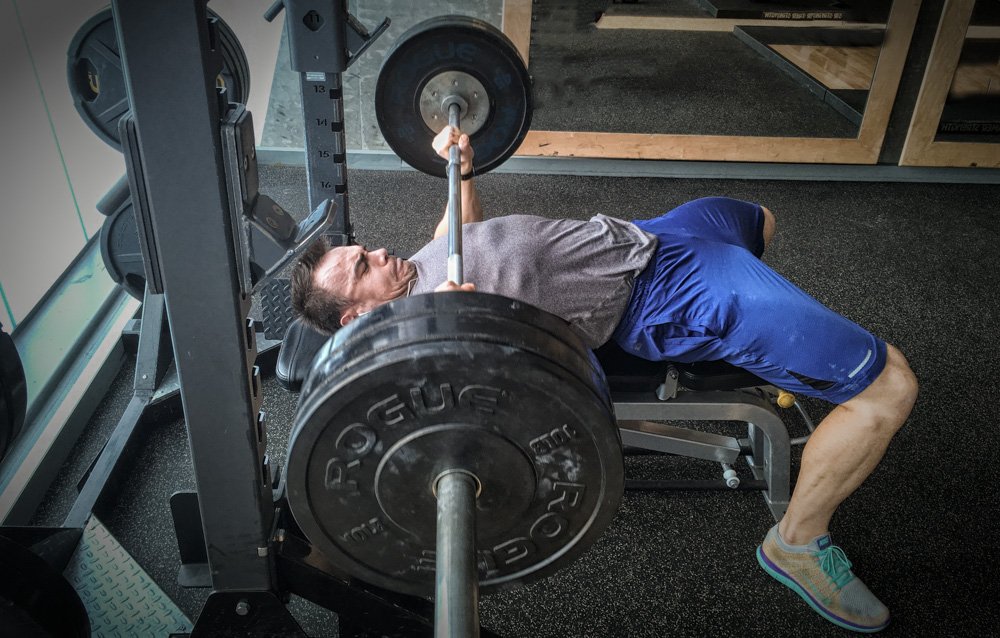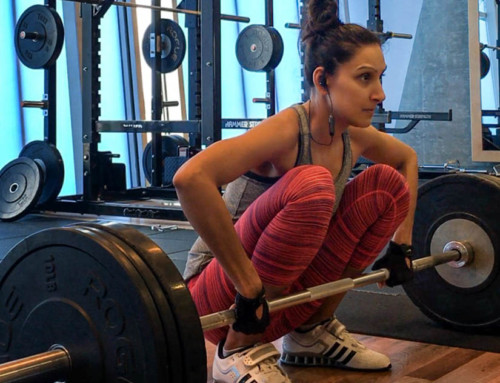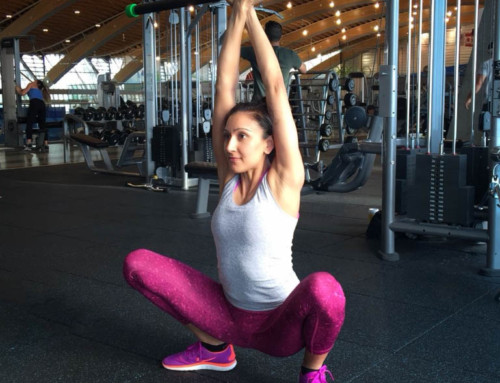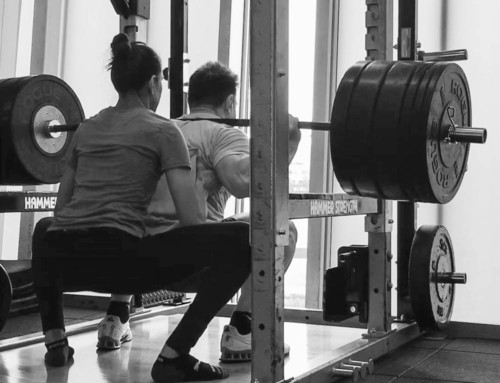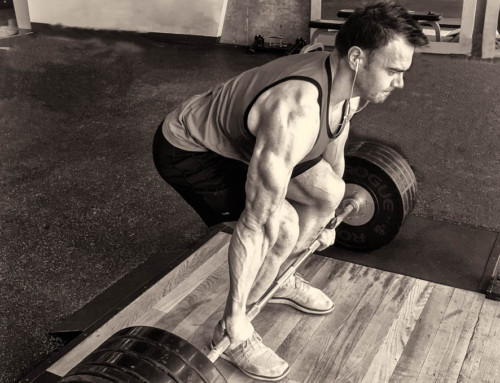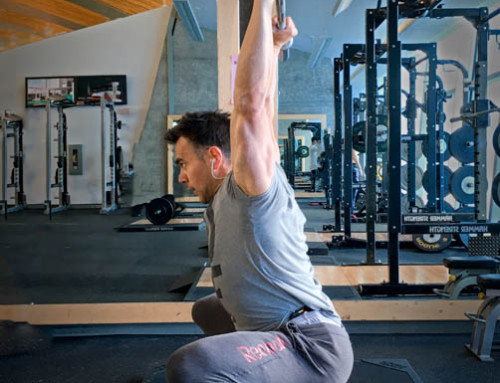Upper body strength has been and continues to be a popular discussion platform. We are all fascinated with strength, its power and the learning process of its development. Hence, the reason why so many of us marvel at individuals with muscular pecs, shoulders and arms. Among gym goers, regardless of physical performance level, the most popular question is undoubtedly, “how much can you bench?”
For the goals of Stronger Leaner Faster Self, we at Science and Strength, utilize overhead presses as the main upper body development of strength and power. However, when focusing on horizontal plane specifically, the bench press becomes a forerunner of this particular performance. In this article, we’ll discuss the benefits of bench press and several variations for horizontal press development.
Bench Press Technique
This specific lift is technical in nature and has had numerous passionate debates advocating one particular form over the other. If you thought Squats and Deadlifts were the pools of controversy, then bench press is a raging, argumentative river with a continuously changing currents. Everything from hand grip position, grip width, bar path, head, torso and foot position have all been extensively discussed in various textbooks, magazines and almost every internet fitness/wellness site.
Debating technique specifics regarding lower back angles, foot and elbow positioning is beyond the scope of this article. Furthermore, our blog always advocates that anything done (inside the gym or elsewhere) needs to have purpose. Therefore, exercise selection and execution should be based on the personal goals rather than some argument about which technique is better, or someone’s internet opinion. Now without further ado, let dive into the horizontal push and developing strength along this plane.
Bench Press
As covered in Benefits of Push Press article—shoulders are a complex body part that include coordination of several bones, joints, muscles and connective tissue in order to produce force. Also, due to uniqueness of glenohumeral joint, shoulders have the greatest range of motion through various planes in both push and pull motions. Furthermore, this natural movement of shoulders and coordination between glenohumeral and scapulothoracic joints during force production—pressing yourself against a pad is not an ideal position. Pressure generated against the pad limits the natural movement and coordination of above mentioned joints. However, strength is all about intensity and in order to generate maximal mechanical stress, loads (in barbell or dumbbell form) need to be far greater than what is offered through bodyweight exercises. Hence, the bench press is still a king of horizontal press.
Bench Press Setup—SLF Style
To continue to develop biomotor abilities while minimizing risk of injury, the stronger leaner faster approach is to always engage numerous body systems in order to increase force production and performance. Through trial and error, we at Science and Strength have organized the following setup towards performing the bench press.
The Grip
There is numerous debate about grip placement and width. Even though wider grip is mechanically advantages towards greater bench press numbers, we find that keeping your hands closer creates a tighter position, squeezing your laterals during the eccentric action.
Tighter back produces more control throughout the lift; allowing for a more explosive press out of the bottom position. Faster concentric contraction produces greater force development, recruiting numerous motor units (MUs) within the upper body. The natural grip for SLF bench press is just outside the shoulder width. When using an empty bar and bringing it down just above chest level (approximately 1 to 2 inches (2 to 5 cm) above chest), this grip position produces the greatest muscular engagement towards the bar path.
Shoulders
Now, many advocate to retract shoulder blades back (towards each other) before lifting—taking the bar off the hinges and for the right reasons. This may be awkward at the beginning but with practice becomes second nature. This set up positions your back into a more stable surface on the bench. By moving the shoulder blades back also creates greater chest exposure of both pec major and minor resulting in a stronger pressing line.
Feet Placement
Feet placement is done to center and anchor your torso on the bench. We do this for greater control and more tissue engagement. The feet width we use during bench press is the same as during squat (just outside the hip line, with feet slightly staggered).
During the exercise, heels are firmly planted on the floor, generating tension within the lower body, engaging the core and hence producing further stability. Driving the heels through the floor generates the tension and overall torso control during the lift, but be careful to not push too aggressively which shoots the hips in the air. By lifting the glutes off the pad and pushing the entire torso up and off the bench rolls the tension upwards towards upper back and shoulders. Rather than spreading the stress across greater area (glutes anchored to the bench), the highly extended back bridge (glutes off the bench, in the air) places the body in a less stable and vulnerable position, especially when under the loaded barbell.
The Back
During this exercise, you need to think about the most stable position that is capable of producing ample power while keeping you at bay from injury. To do that, the body needs to have a constant contact with the bench through head, shoulder blades and glutes. In order to create tension within the torso, lower back is arched. Arched back also decreases the travelled distance of the bar, hence allowing you to add more weight. Bigger weights on the bar translate in greater strength adaptations. We also found that arched back along with closer elbow angles (around 60 – 70 degrees from torso) engage triceps and chest more intensely than when the back is in a flat and relax position. After all, the purpose of the bench press is to develop horizontal press, and an arched back produces a better set up for you to achieve strength goals.
Bar Path
Now, this will likely have the greatest variance among lifters. At mentioned before, at Science and Strength, we tuck our elbows fairly close (about 60 – 70 degrees) allowing the bar to travel towards the sternum. During eccentric contraction, we engage the laterals as much as possible by pulling the bar. If this sounds odd, just give it a try and you’ll instantly notice greater control during the negative movement.
The bar is never bounced off the chest (at the bottom position), but stopped just an inch or two above (2 – 5 cm). As the bar descends downward, we also push the chest cavity upwards. This motion ensures shoulder blades stay retracted maintaining that stable surface. On the way up, the bar path moves slightly forward towards the head. This motion engages pec major to a greater degree during concentric movement resulting in greater strength gains.
Lower back – Risk of injury or Internet controversy?
One of the more debatable topics is regarding arching your back—whether it is safe and if one version of this exercise is a truer form versus a cheating form, when placing the back in an excessive bridging position. Like anything in life, information needs to be examined, sorted through between applicable techniques against personal opinions with little relevance towards personal goals. Some people are set in their views with no room for variety. We have tried such set methods, and speaking from personal experience we can say that many of such roads lead to road-blocks.
Being open to new or different methods develops multivariable disturbances that generate hybrid adaptations not only within the body but also the mind. Experimentation is key to further identifying movements, exercises and principles that engage the body and produce results of next levels.
If you take a look at muscular physiology of chest muscles, you’ll undoubtedly notice that the anatomical structure resembles a cross linking and weaved strings of fibers. Some of these fibers run diagonally across, others in a downwards angle from upper sternum to lower armpit areas but, the majority of the fibers run on a upward angles from sternum up towards anterior (front) deltoids. These upwards fibers further intertwine with shoulder muscles creating this coordinated muscular mass to produce majority of the force along the horizontal pushes.
This structural design simply cannot be fully utilized in a straight – horizontal position (flat, relaxed back). In order to engage these large muscle slabs, the body needs to be angled (arched back). Arching lower back generates an elevated angle for the pectoral muscles and opening up the chest cavity in the process. The arch produces a greater mechanical direction for the pectoral muscles to recruit more fibers resulting for greater force potential. Angling the back not only opens up the chest, but also incorporates more power from shoulders and triceps. This is a true nature of a compound exercise through engaging not only more tissue, but producing more force by increasing muscular coordination. Arching also stabilizes the shoulder blades (easier to retract), essentially creating a flat and a more stable torso platform.
How much arch? And the optimal back angles?
Well, that all depends on several variables, including your personal goals, as well as physical structure. At Science and Strength, we do utilize some arch (as discussed above) in order to stabilize and produce optimal fiber activation moving more weight in the process. The lower back arch, referring to keeping points of contact with the bench (head, shoulders and glutes). Bringing your hips up at any time while performing bench press is a dangerous technique placing the body into a higher risk category.
Variations to Bench Press
As with any compound exercise, minor changes ignite various adaptations. Some of our favourite variations to mix things up on a standard bench press includes:
Resistance Bands (RBs)
We enjoy implementing resistance bands in various movements, and the benefit of variable tensions have been mentioned in number of our blog posts. Bench press is no exception, as RBs produce more tension at more dominant body angles. As the result RBs produce greater effort throughout concentric and eccentric contraction, activating more motor units and improve rate of force development (RFD) as the result. RB can be incorporated into bench by either attaching a pair of same tension bands on either side of the bar; or simply weaving a single RB through the back (as in a push-up set up) anchoring it inside the palm of your hands. Using this set up works for both barbell and dumbbell bench press versions.
The Spoto Press
Named after Eric Spoto (one of the strongest bench pressers of all time) is essentially a bench press with paused reps at the bottom position without touching your chest. Holding the bar just above pectoral muscles for two seconds (or so) produces great amount of physical fatigue by introducing start/stop positions under load at different angles. By holding the bar at the bottom for approximately two seconds, also increases time under tension (TUT) generating significant mechanical stress with all associated hypertrophy benefits. This pressing version teaches neuromuscular system to continuously engage and increase upper body power through reversal strength. The taxing process of any isometric training, pushes the body into overdrive to generate effort reversing the movement and bringing the bar upwards from a dead stop position. Due to such mechanical loading, Spoto presses need less weight, to create desired metabolic disturbance.
Benefits of Bench Press
Bench press is considered by many as the king of upper body strength development and for the right reasons.
- Bench press is able to target pectorals with maximum or slightly sub-maximal loads. This means greater activation and stronger presses along the horizontal plane.
- High intensities produce greater strength gains, not only by increasing power within chest (pec major and pec minor) itself, but also other contributing body parts such as shoulders, triceps, serratus anterior (muscles attached to the ribcage under the arms) and core.
- As with any heavy lifts, adaptations include greater neural activation among upper body (greater motor unit recruitment and activation (rate-coding)). Also, upper body bone density improves as the result of utilizing maximal loads during bench press within arm, hand, shoulder and chest bones.
- Carryover effect. Strong pectorals improve development of other upper body parts including back, shoulders, arms and the trunk.
Final Thoughts
Horizontal push is an important biomechnical movement. Bench press is a compound lift that produces optimal results of maximum strength performance within horizontal plane. Through practicing technique including tight positioning and arched back, the body generates a stable and favouring angles to engage greater amount of tissue to produce force.
Each of us may have different physiological attributes and personal goals. Therefore, practicing technique while experimenting with personal adjustments is recommended in order to find that favourable set up, and to take your bench press to the next level.
We hoped you enjoyed this article, if so, please share it on your favourite social media so, we can get on google’s radar. Fell free to leave us a comment and start a discussion on the topic.
If you are looking to build strong, lean and beautiful shoulders be sure to check out our training books:

